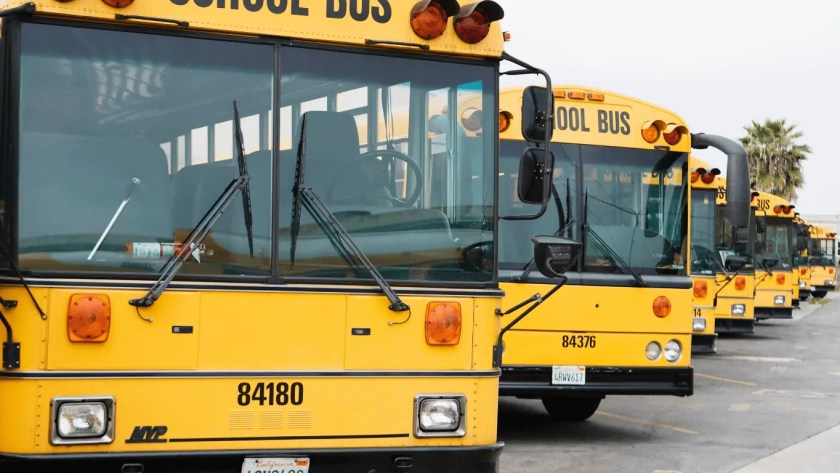
School buses are small, boxy, and usually have a high front. For many school buses, the flat front is necessary because of the ease of loading and unloading children and cargo.
Table of Contents
Here are reasons Why school buses flat in the front
1. The driver has a good view of the road while driving
The safety of the passengers depends on the driver of the bus. The bus driver can see the other cars on the road while driving. A flat front gives the driver a complete front view of the road and the surrounding. This helps to avoid accidents.
2, The driver has a good view of the children getting on and off
The bus driver can see all the children in their seats and if any children are walking in front of or behind the bus because no doors are blocking their view.
This is one of the most important reasons Why school buses are flat in the front. The simple answer is to ensure the safety of the Children onboard.
3. There is more space for students to stand at the front of the school bus and wait for their stop
More students can be loaded and unloaded quickly, safely, and easily because there is more space to stand at the front of the school bus. Buses are designed keeping this fact in mind to ensure the safety of the passengers.
4. The bus can be loaded and unloaded faster and safer
The school bus must make many stops to pick up and drop off the children. The flat front provides quicker student boarding, unloading, and loading.
5. The children are more visible to the driver:
The bus driver has a better view of all children on the bus, which is especially helpful at night when it is harder to see everyone. This is one of the essential safety measures for why school buses are flat in the front.
6. If there is an accident, fewer people will be injured:
When a collision occurs in the front of a school bus, fewer passengers are injured because there are no doors on the sides to the entrance and exit of the school bus. Again Safety is kept in mind while designing School buses.
7. The bus must be wider
For a school bus to be built and sold, it must have a width of at least 10 feet 10 inches; 12 feet wide is even better, which means the school bus is wider. The vehicle is designed keeping all these aspects in mind.
8. The school could get an insurance discount
The insurance company would give higher discounts for the school if the front of the bus was flat as it improves safety and avoids accidents.
9. More materials can fit in the bus’s rear without compromising safety
The larger size helps to accommodate more children and cargo in the rear of the school bus without endangering them or damaging them by making it more difficult and imprecise to load and unload them.
10. They are easier to clean
-There are no sharp edges on the flat front of the school bus for children to get hurt on, and the front is easy to clean because it does not have any doors to obstruct access.
11. It is easier to replace
In an accident, the flat front can be replaced easily because it is in one piece, while a bus with a curved front would require more effort and time to fix.
12. It uses less energy
Because no doors are on the sides, less energy is wasted when it comes time to open and close them. The flat shape also has no sharp corners for collisions to occur.
13. It is more economical
It is more economical to have the school bus have a flat front because it reduces the cost of building the bus and replacing it in case of an accident.
Conclusion – Why are school buses flat in the front
In conclusion, some school buses are flat in the front to be more effective. School buses cannot be used if they do not have a flat front to be most effective, efficient, and safe. Some school buses are flat-fronted, so they can be built and kept as cheap as possible while controlling who gets on and off them efficiently.